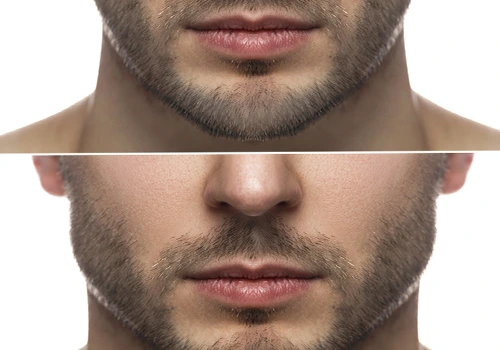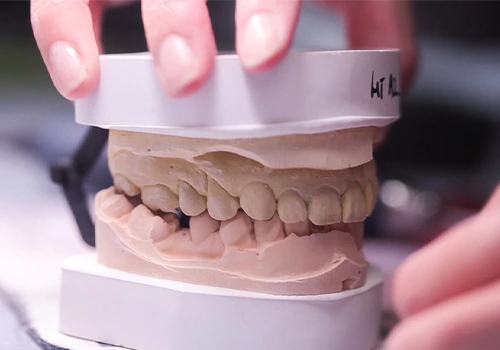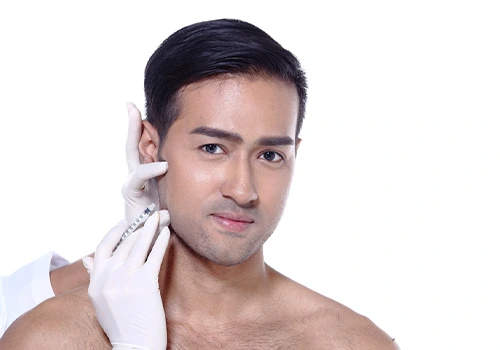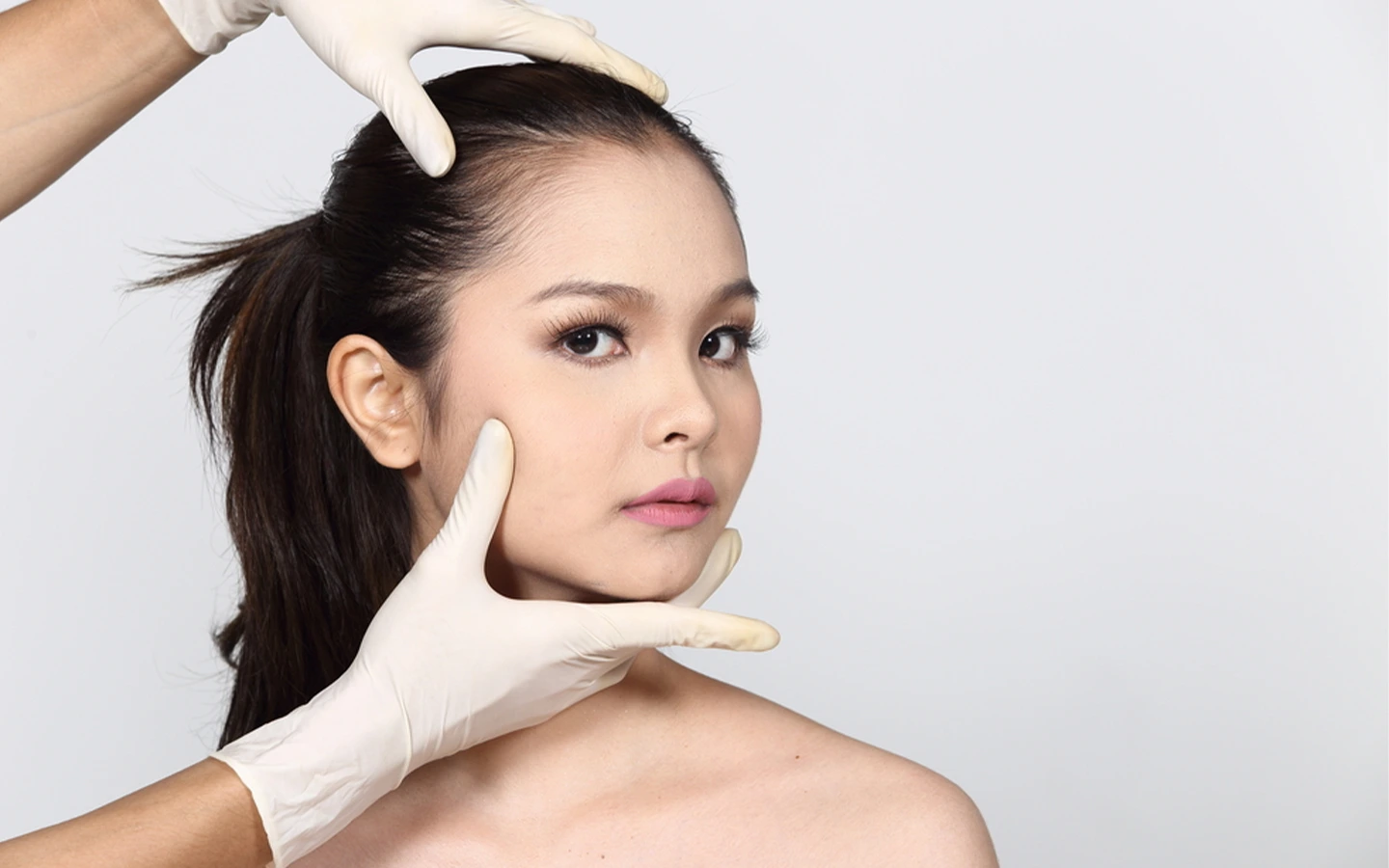Jawline Surgery: Transform Your Smile
Cosmetic jawline surgery is more than just about appearance; it’s about boosting self-esteem and feeling comfortable in your skin. So, if you’ve ever contemplated enhancing your jawline, read on. “Dr. Maadico ” ensures you have a memorable experience during your jawline surgery in Iran. We’re here to guide you through the process and cover the crucial aspects of choosing the right surgeon, the risks and considerations you need to know, and how to prepare and recover.
Why Do People Choose Jaw Surgery?
Jaw surgery, also known as orthognathic surgery, is a medical procedure performed for both functional and cosmetic reasons. Here are some common reasons why people opt for jaw surgery:
- Correction of Functional Issues: Some individuals may have misaligned jaws, leading to problems with speaking, eating, or breathing. Jaw surgery can correct these functional issues and improve the overall quality of life.
- Aesthetic Enhancement: Cosmetic jawline surgery is chosen by those looking to enhance their facial appearance and to create a more balanced and attractive look.
- Treatment of TMJ Disorders: Temporomandibular joint (TMJ) disorders can cause pain and discomfort. Jaw surgery may be recommended to address severe TMJ issues.
- Facial Trauma: After facial trauma or injury, jawline surgery may be necessary to restore proper function and appearance.
- Obstructive Sleep Apnea: In cases of obstructive sleep apnea, where breathing is interrupted during sleep, jawline surgery can be a treatment option to improve airflow.
- Orthodontic Reasons: In conjunction with orthodontic treatment, jaw surgery may be necessary to correct severe bite and alignment issues that braces alone cannot address.
Types of Jawline Surgery
There are several types of jawline surgeries, each addressing specific problems. The most common types of jaw surgery include:
Jawline Augmentation Surgery
Jawline augmentation surgery, often referred to as jaw implants, entails the insertion of implants into the patient’s jaw to create a more defined and angular facial structure. Depending on the surgeon’s assessment, a chin implant may also be recommended to achieve a harmonious facial profile. This procedure can be combined with other cosmetic surgeries, such as rhinoplasty, for comprehensive facial enhancement.
| Aspect | Description |
| Ideal Candidates | Individuals with fully developed jawbones, in excellent overall health, non-smokers, and possessing realistic expectations regarding surgical outcomes. |
| Preparation | Surgeon consultation, medical evaluation, discussion of goals, and pre-operative instructions. |
| Procedure | incision inside the mouth area, inserting an implant along the jawbone, suturing the incision, and applying a bandage to the jaw and chin regions. |
| Hospitalization | Usually outpatient, no hospitalization is required. |
| Anesthesia | General |
| Duration | typically 1-2 hours. |
| Recovery and Aftercare | Swelling, bruising, and discomfort are common. |
| Recovery Time | 1 to 2 weeks |
| Full Recovery | 6 weeks |
| Side Effects | Swelling, bleeding, infection, allergic reactions to the implant, and implant displacement |
| Results | Enhancing the prominence of the chin and jaw |

Jawline Reduction Surgery
Jawline reduction surgery, also known as mandibular angle reduction, involves the reshaping of the jawline by altering the angle of the mandible. Surgeons typically make incisions inside the mouth to access the jawbone and remove excess bone or tissue, creating a more refined jawline.
| Aspect | Description |
| Ideal Candidates | Those with a square or wide jawline seek a more slender and balanced facial appearance. Good health, realistic expectations, and an understanding of risks and benefits are essential. |
| Preparation | Surgeon consultation, medical evaluation, discussion of goals, and pre-operative instructions. |
| Procedure | Incisions inside the mouth, removal of excess bone or tissue, reshaping the jawline. |
| Hospitalization | Usually outpatient, no hospitalization is required. |
| Anesthesia | Local anesthesia or sedation |
| Duration | Typically 1-3 hours, varies by complexity. |
| Recovery and Aftercare | Swelling, and discomfort for several weeks. Soft diet, proper oral hygiene, and pain medication as prescribed. |
| Recovery Time | 1 to 2 weeks |
| Full Recovery | 3 to 6 months |
| Side Effects | Swelling, bruising, temporary numbness. |
| Results | Improved jawline definition, more balanced facial appearance. Full results are visible once the swelling subsides. |
V-Line Jaw Surgery
The V-line jaw is characterized by a slim, V-shaped jawline that is considered aesthetically appealing. It’s achieved through surgical and non-surgical means to create a softer, more feminine appearance.
| Aspect | Description |
| Ideal Candidates | Individuals looking to achieve a softer, more feminine facial appearance. Candidates may require jaw reduction, chin augmentation, or liposuction, tailored to their goals. |
| Preparation | Comprehensive surgeon consultation to determine goals and plan procedures. |
| Procedure | Tailored to individual needs; may include jaw reduction, chin surgery, liposuction, and other techniques. |
| Hospitalization | Usually outpatient, no hospitalization is required. |
| Anesthesia | Local anesthesia or sedation |
| Duration | Varies based on the combination of procedures, typically 2-5 hours. |
| Recovery and Aftercare | Swelling, bruising, and discomfort are common. Follow post-operative care guidelines, including a soft diet and pain management. |
| Recovery Time | 1 to 2 weeks |
| Full Recovery | 3 to 6 months |
| Side Effects | Temporary numbness, swelling, and bruising. |
| Results | Achievement of a more defined V-line jaw, increased self-confidence, and aesthetic satisfaction. |

Asian V-Line Surgery
Asian V-line surgery is influenced by the cultural preference for a smaller, V-shaped jawline in many Asian countries. It aims to enhance facial features while respecting cultural aesthetics.
| Aspect | Description |
| Ideal Candidates | Individuals desire a more V-shaped jawline while respecting cultural aesthetics. Procedures may include jaw reduction, chin surgery, or non-surgical options like Botox. |
| Preparation | Extensive consultation with a surgeon who understands cultural preferences and individual goals. |
| Procedure | Tailored to patient goals, often involving jaw reduction and other techniques. |
| Hospitalization | outpatient, no hospitalization is required. |
| Anesthesia | Local anesthesia or sedation |
| Duration | Typically 2-4 hours, depending on the complexity of the case. |
| Recovery and Aftercare | Swelling, discomfort, and temporary numbness are common post-surgery. Follow post-operative care guidelines. |
| Recovery Time | 1 to 2 weeks |
| Full Recovery | 3 to 6 months |
| Side Effects | Swelling, bruising, temporary numbness. |
| Results | Improved facial aesthetics, adherence to cultural beauty standards, and increased self-confidence. |
Orthognathic Surgery
Orthognathic surgery is unique in that it can be medically necessary to correct functional issues like misaligned jaws and teeth that affect speaking or eating. However, it can also be performed for cosmetic reasons, primarily to improve facial aesthetics.
| Aspect | Description |
| Ideal Candidates | Individuals with misaligned jaws (overbites, underbites) causing functional problems or seeking improved facial aesthetics. |
| Preparation | Thorough consultation, dental and medical evaluation, and discussion of functional and aesthetic goals. |
| Procedure | Repositioning of the upper and lower jaw to achieve proper alignment and balance, involving maxillary and/or mandibular osteotomies. |
| Hospitalization | 1 to 2 days of inpatient hospital stay |
| Anesthesia | General anesthesia |
| Duration | 2-4 hours, depending on the complexity of the case. |
| Recovery and Aftercare | Swelling, discomfort, and temporary changes in bite alignment. Follow post-operative care instructions. |
| Recovery Time | 2 to 4 weeks |
| Full Recovery | 6 to 12 months |
| Side Effects | Swelling, temporary changes in bite alignment, discomfort. |
| Results | Corrected functional issues, improved bite alignment, and enhanced facial aesthetics. |
Risks and Considerations
Potential Complications
Jaw surgery is a complex procedure that carries some inherent risks. Patients must be aware of these potential complications before undergoing the surgery:
- Infection: Infections can occur when bacteria enter the surgical site due to inadequate sterilization, improper wound care, or pre-existing infections. Contaminated surgical equipment or an unsterile environment can introduce bacteria. Proper preoperative and postoperative hygiene, as well as antibiotic treatment when necessary, can prevent and manage infection.
- Nerve Damage: It can result from the complex facial nerve network. Surgeons take precautions to avoid it, but it can occur if a nerve is accidentally cut, stretched, or compressed during the procedure. Another surgery can repair it.
- Swelling and Bruising: Swelling and bruising are natural responses to surgical trauma, tissue damage, and the body’s inflammatory response. Cold compresses and head elevation can help minimize swelling and bruising.
- Blood Loss: Excessive bleeding can result from vessel manipulation, damaged vessels, underlying medical conditions, or the nature of the surgery. Surgeons use various techniques to control bleeding during the procedure, including hemostatic agents and blood transfusions if necessary.
- Anesthesia Risks: It can result from allergic reactions, patient-specific sensitivities, pre-existing medical conditions, or adverse drug interactions. An experienced anesthesiologist carefully assesses the patient’s health and administers anesthesia accordingly to minimize these risks.
- Malocclusion: It can occur when surgery disrupts the normal jaw alignment. Surgeons aim to achieve cosmetic changes while maintaining proper bite alignment, but various factors can affect this. Malocclusion may require corrective treatment, such as orthodontics or further surgery, to restore proper bite alignment.

Realistic Expectations
Patients need to have realistic expectations about the outcomes of the surgery:
- Jaw surgery can significantly enhance facial aesthetics and correct bite problems, improving functions like chewing, speaking, and breathing.
- The final results may take several months to become fully apparent, and recovery can be challenging.
- Jaw surgery often complements orthodontic treatment. Be prepared for a comprehensive process.
Post-surgery Discomfort
Patients should be aware of the postoperative discomfort and the need for proper self-care:
Pain and Swelling
- After jawline surgery, it is expected to experience pain and swelling around the surgical area. The level of pain and swelling can vary depending on the extent of the procedure.
- Your surgeon will prescribe pain medications to help manage the discomfort. These should be taken as directed. Additionally, cold compresses applied to the swollen area can provide relief and help reduce swelling. Following the prescribed medication regimen and using cold compresses as advised are essential for managing these common postoperative symptoms.
Speech Impairment
- Jawline surgery can temporarily affect your ability to speak clearly. This is often due to swelling and changes in the structure of the jaw and mouth.
- Patients are encouraged to be patient and understanding with themselves during this time. Speech often improves as the swelling subsides and the body adapts to the changes. Practicing speech exercises recommended by your surgeon or speech therapist can help expedite the recovery of your clear speech.
Dietary Restrictions
- Following jawline surgery, you must adhere to a soft diet for several weeks. This means avoiding hard, crunchy, and tough-to-chew foods. The surgical area needs time to heal, and consuming soft, easily digestible foods reduces stress on the jaw and minimizes the risk of complications.
- Ensure that your diet consists of foods like mashed potatoes, pureed vegetables, yogurt, soups, smoothies, and other soft-textured items. Staying hydrated is crucial during this time, so drink plenty of fluids. As you progress in your recovery, your surgeon will guide you on when it’s safe to reintroduce solid foods.
Oral Hygiene
- Proper oral hygiene is essential to prevent infections during the healing process. Following the surgical procedure, the site may be more susceptible to infection, and maintaining a clean oral environment is crucial.
- Follow your surgeon’s instructions for oral care carefully. This may include gentle rinsing with a prescribed mouthwash and careful brushing around the surgical area. Avoid vigorous brushing that could disrupt the healing process. Any prescribed antibiotics should be taken as directed to reduce the risk of infection further.
Long-term Maintenance
After jawline surgery, there are some long-term considerations:
- Attend all postoperative follow-up appointments with your surgeon and orthodontist to monitor progress and make necessary adjustments.
- In some cases, orthodontic treatment may continue post-surgery to fine-tune the bite and alignment.
- As swelling subsides and healing progresses, you may notice gradual changes in your facial appearance.
- Be aware that some lifestyle changes may be necessary to maintain results, including wearing retainers and practicing good oral hygiene.

Is Jaw Surgery Permanent?
Jawline surgery is generally a permanent solution for addressing structural and functional issues like malocclusion and facial imbalances. The outcomes of the surgery are intended to be long-lasting, but natural aging can lead to gradual changes in facial appearance over time. Some cases may require ongoing orthodontic treatment for fine-tuning the bite, and post-surgery maintenance is essential to ensure stability. Consulting with your surgeon and orthodontist for specific guidance is crucial to understanding the permanence and long-term considerations related to your case.
Final Takeaway
Whether for function or aesthetics, jawline surgery offers transformative potential. Prioritize choosing a board-certified surgeon with experience, set realistic expectations, and prepare for post-surgery discomfort. Consider the possibility of long-term maintenance.
With careful consideration, informed decision-making, and professional guidance, “Dr. Maadico” can help you achieve remarkable results with your surgery. Don’t hesitate to reach out today!
If you’re ready for a change, request a free consultation.
You may also be interested in knowing about:
Chin Reshaping
Facial Bone Contouring
Chin Sculpting Procedures
Facial Scar Revision
Cheek Dimple Creation
Forehead Reduction Procedure
Brow Bone Reduction
Buccal Fat Removal
Facial Feminization
Lip Enhancement
Ear Correction
Necklift
FAQ
How painful is jawline surgery? Jawline surgery typically involves postoperative discomfort, but the level of pain can vary. Surgeons prescribe pain management to help alleviate it.
- Do people look better after jawline surgery?
Yes, many people achieve improved facial aesthetics and enhanced self-confidence after jaw surgery, especially in the case of cosmetic procedures.
- What makes Iran the best destination for jawline surgery?
Iran’s excellent healthcare infrastructure, proficient maxillofacial surgeons, and competitive pricing make it a popular choice for those seeking high-quality jawline surgery at a more affordable cost.
- Is it reasonable to do jawline surgery?
Whether jaw surgery is “good” depends on individual goals and needs. It can be beneficial for correcting functional issues, enhancing aesthetics, and improving overall quality of life.
- What is the age limit for jawline surgery?
There’s no strict age limit for jaw surgery. The suitability for surgery depends on the individual’s overall health and the specific procedure’s goals. Consultation with a surgeon is essential to determine eligibility.


